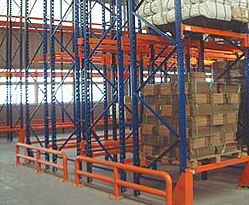Five Warehouse Blunders to Avoid
 Supply chain depends on the warehouse. However, many parts go into building the perfect warehouse. It's also about the staff as much as it is about the building and equipment. The design of the warehouse requires certain features like high-density shelving systems that create more function and efficiency, a blend necessary for great productivity. The people in your warehouse also contribute to its design and function, so don't forget about making those spaces that will make a difference for pickers and managers. There are a few things that are particular to warehouse management, such as the type of inventory system and stacking system used in your building. Where your loading is placed and how you design your zones will also have an impact on your productivity. There are a few different warehouse designs that work today and offer the best blend of all that a warehouse needs, but it's worth it to note what can poorly affect a warehouse and what to avoid when designing your own.
Supply chain depends on the warehouse. However, many parts go into building the perfect warehouse. It's also about the staff as much as it is about the building and equipment. The design of the warehouse requires certain features like high-density shelving systems that create more function and efficiency, a blend necessary for great productivity. The people in your warehouse also contribute to its design and function, so don't forget about making those spaces that will make a difference for pickers and managers. There are a few things that are particular to warehouse management, such as the type of inventory system and stacking system used in your building. Where your loading is placed and how you design your zones will also have an impact on your productivity. There are a few different warehouse designs that work today and offer the best blend of all that a warehouse needs, but it's worth it to note what can poorly affect a warehouse and what to avoid when designing your own.
No Storage and Low-Density Shelving
Storage solutions are a necessity for the modern warehouse. Many business owners don't understand that storage solutions can really make or break warehouse design. High density storage solutions are necessarily. They enhance and expand upon the space of a warehouse and give you a more efficient option. Pallet racking systems are a great option for storing pallets because they allow for faster picking when accessing stock. You can include product profiles or stock keeping units (SKUs) into a warehouse management system, which will help when you create zones in the warehouse. Storage is key to the perfect warehouse. If you focus on anything the most, maintain the good storage solutions to ensure the most efficiency and productivity for your business.A Little Unbalanced
Good use of space is important but it's also to have a balance with your storage. The top warehouses use both high density shelving and pallet solutions, but they have to be placed accurately and use the space in a wise way. Depending on what you're storing in the warehouse, you may need to widen aisles and create a better traffic flow. Lower storage shelves may also need to be rearranged to help with more on-demand products. If you balance storage with picking, then you'll have more efficiency and your cycle time will be shorter as well. You also want to make sure that your zoning factors in the location of your loading docks.Not Zoning Appropriately
There are a variety of studies available that show how zoning is important to efficient product lines and productivity. A high intensity spot in the warehouse or an otherwise "golden zone" is important to the design because it helps with the loading dock and work procedures. Equipment storage and staff activities also have a better flow if there is a focal area to the warehouse. In addition, lower demand zones are also important and should be created further away from the loading dock area.Bad Picker Rapport
You definitely want to build support of your pickers in the warehouse. If you don't, you could have a riot on your hands or a lack of pickers. Managers should be affluent in speaking to staff in a cordial yet dominant way that creates better productivity. However, you also want to provide good compensation, bonuses and incentives to keep pickers happy in your warehouse. In addition, warehouses should be kept at an adequate temperature with safety guidelines, sufficient break times and good air quality.Lack of Automation and Technology
The useful tech tool for the modern warehouse is the WMS(Warehouse management system). This controls the movement of so many things in the warehouse including transactions, stock and tracks what people are doing in the warehouse. WMS also can combine with mobile phones, scanners, tablets and other software as well. Without a WMS, you lose an important monitoring system that helps managers make the effective change and decisions. In addition, it helps staff organize and compile orders efficiently, collect other orders and notify of changes made to any types of stock in the warehouse. For example, staffs can report changes like damaged stock in the inventory list in WMS. Warehouses also benefit from automation and tech stuff. You can incorporate a conveyor belt and wireless networks to improve your existing system and make sure that you keep your productivity on track.
Advertise on APSense
This advertising space is available.
Post Your Ad Here
Post Your Ad Here

Comments